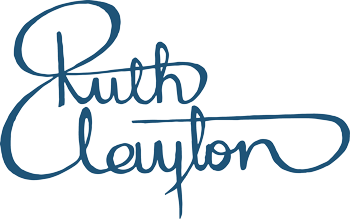Creating wave patterns in watercolour using cling film (plastic wrap in the USA) is a great technique among artists. It is a popular method for achieving those intricate, organic textures. However, the environmental impact of single-use plastic has led many of us to seek more sustainable alternatives. In this blog, I’ll share my journey of experimenting with compostable cling film, tissue paper, and beeswax wrap to see if they can effectively replace traditional plastic wrap in watercolour painting.
The Traditional Method: Cling Film
Cling film creates beautiful, organic patterns in watercolour paintings by trapping moisture and pigment in unique ways. To use it, simply lay a piece of cling film over a wet wash of watercolour and manipulate it to form wrinkles and folds. As the paint dries, it settles into these patterns, resulting in a stunning, wave-like effect. This technique is especially useful for depicting the fluid, dynamic nature of water and waves.
Seeking Sustainable Alternatives
Recognizing the environmental issues associated with single-use plastic, I decided to test a few eco-friendly alternatives to see if they could replicate the same artistic effects.
Compostable Cling Film
Compostable cling film is designed to break down more easily in the environment, making it a greener option. I found that it behaves similarly to traditional cling film in terms of flexibility and texture creation. When applied to a wet watercolour wash, compostable cling film produced interesting wave patterns, though it was slightly less durable and tended to tear more easily. Overall, it’s a viable alternative, though it requires a gentle touch.
Tissue Paper
Next, I experimented with tissue paper. This material is highly absorbent, taking some of the pigment off when removed, which presented both challenges and opportunities. However, when placed over a wet wash, tissue paper absorbs some of the paint, creating softer, more diffuse patterns. While it doesn’t mimic the crisp lines of cling film, tissue paper can create an atmospheric effect that’s quite appealing. It’s a good choice for softer, more subtle wave patterns.
Beeswax Wrap
Beeswax wrap, commonly used as a sustainable alternative for food storage, was my final experiment. The stiffness and tackiness of beeswax wrap make it less flexible than cling film, but it can still be manipulated to form interesting textures. When pressed onto a wet wash, it creates more defined, albeit less linear, patterns compared to cling film. Beeswax wrap is durable and reusable, making it an eco-friendly option worth trying, though it requires more effort to achieve delicate patterns.
Experimenting with Beeswax Wrap: A Closer Look
Instead of wrapping up your sandwiches, can beeswax wrap serve as a good alternative for creating wave patterns in watercolour? Let’s experiment and find out.
Preparation: Cut a piece of beeswax wrap to a suitable size for your painting.
Application: After applying a wet wash of watercolour, press the beeswax wrap gently onto the surface.
Manipulation: Create wrinkles and folds in the wrap to form patterns. The wrap’s stiffness allows for bold textures but may not achieve the fine details of cling film.
Drying: Allow the paint to dry completely before removing the wrap. Observe the patterns created and note any unique effects.
Conclusion: Finding the Right Balance
While none of the alternatives perfectly replicate the exact effects of traditional cling film, each offers unique benefits and can be used creatively to achieve beautiful results in watercolour painting. Compostable cling film is the closest match, though it can be quite tricky to handle and manipulate. Tissue paper provides softer, more diffuse patterns, and beeswax wrap offers bold textures and is highly reusable.
Experimenting with these materials not only helps reduce our environmental impact but also encourages artistic exploration and innovation. By incorporating sustainable practices into our art, we can create beautiful works while caring for the planet. So, grab your brushes and give these alternatives a try—you might discover a new favourite technique!
Happy painting!
If you’ve liked my hints and tips this month and you’d like to learn more, why not take a look at my online courses
view my online courses HERE
If you’d like to download my free PDF all about tricks and techniques in watercolour, CLICK HERE.


